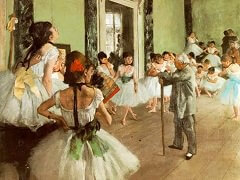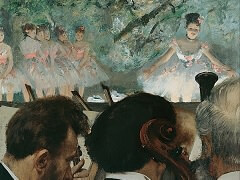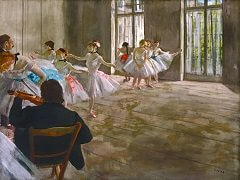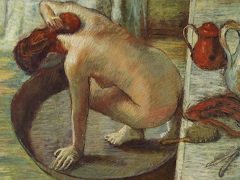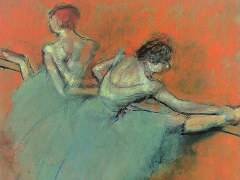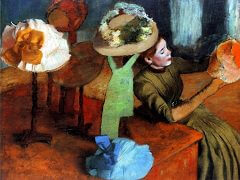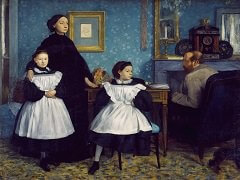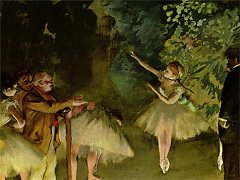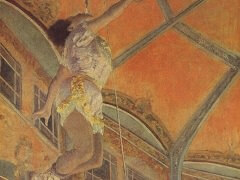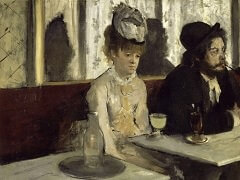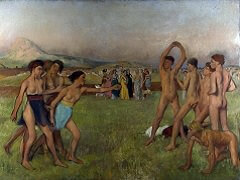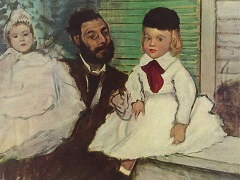Rehearsal in the Studio, 1878 by Edgar Degas

Edgar Degas' Rehearsal in the Studio contains within its four corners almost every major theme that has ever been distilled from or assigned to the artist's work on dancers. Four dancers are front center in the rehearsal room performing routine battement (a position in which one foot remains on the floor while the other is raised a little above the waistline). A group of dancers are situated behind them - one bent over, two gossiping with each other near a floor-to-ceiling window, one all alone at the barre, and one demurely clasping her hands as she regards her fellow dancers performing their exercises. A scene out of a dancer's everyday life.
There is in theory no mismatch between the common subject and loftier artistic platform, but one does exist as a matter of fact. And so, many have observed that Degas' paintings of dancers ingeniously elevate the banal into the beautiful. The dancers rehearse in a room part gray, part brown, lit only by natural light from three floor-to-ceiling windows. Paint on the walls is old and peeling. Only one wall is equipped with a barre. Degas knew that the humble, urban condition of the studio was m uch more a part of the dancer's craft and culture than the Palais Garnier where she performed. Hence the caption next to The Rehearsal at its home in The Fogg Museum of Art reads, "We see Degas' concern with painting modern experiences, especially in urban settings." And finally, we have word from Degas himself that he chose to paint dancers because he was fascinated by movement. Banality, urbanity, movement - all evident in The Rehearsal, but it seems less than satisfying to end the examination of the painting there, for these three can be found in almost any Impressionist painting. We would expect that Degas, with his unique subject and professed realism, brought something different to the table.



